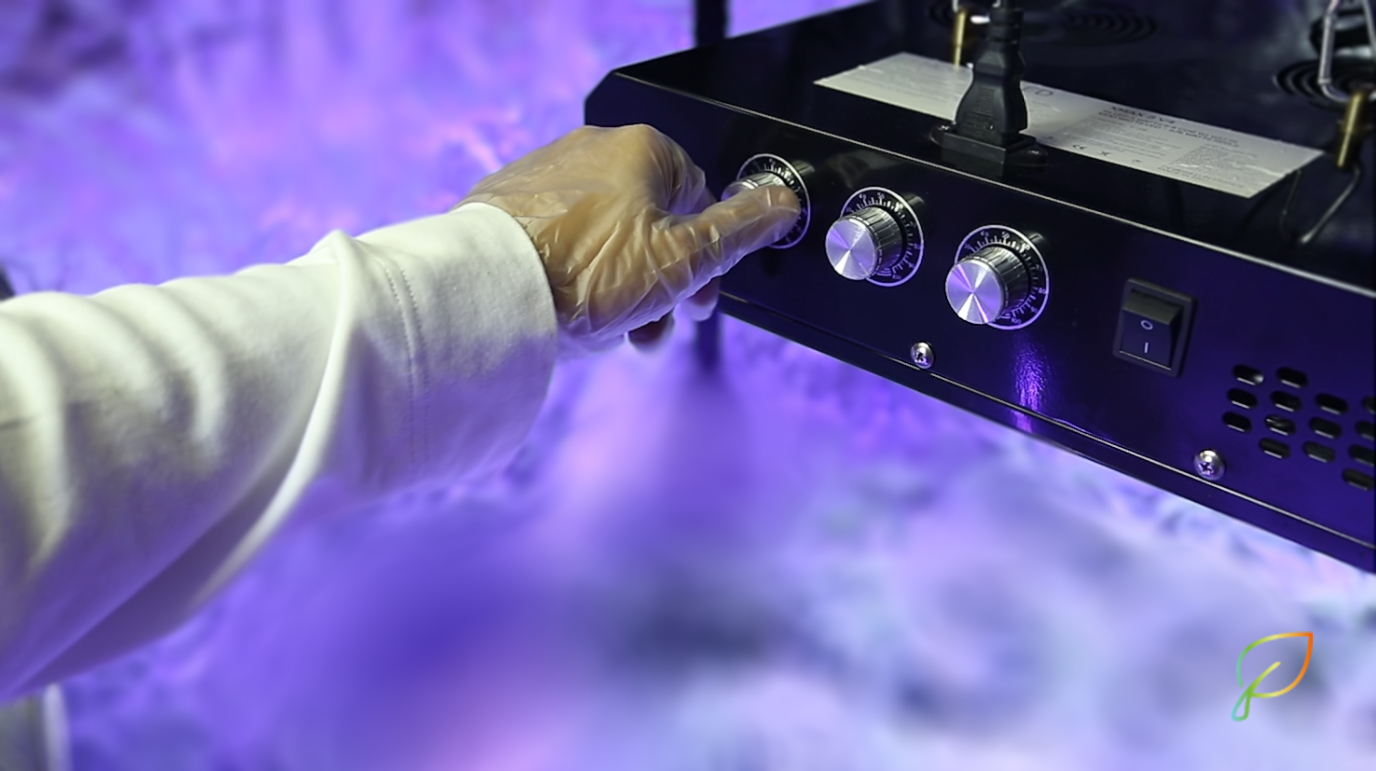Growing LEDs, fixed and dynamic spectrum
In the growing LED lamps field, two technologies confront each other: the fixed spectrum and the dynamic spectrum. What is the difference between the two and what use is best suited to each?

What is a fixed spectrum LED?
A fixed-spectrum LED lamp, horticultural or not, is a source whose light quality can not be adjusted. As you already know if you have read our previous article on how to choose your horticultural LED, each light spectrum has a different influence on the plant.
LEDs emit practically no heat, and are economical in terms of power consumption. On the other hand, a white light spectrum will not necessarily be the most efficient to optimize photosynthesis and photo-morphological development of plants.
You can, however, combine several fixed spectra of varied colors, and thus choose the right spectrum corresponding to the stage of growth of the plant. One will usually choose a blue light for growth, and a red for flowering, or simply lighting with a purple (blue + red) spectrum, which is the hue that maximizes the photosynthetic process.
One single spectrum means that it is not adjustable or modulable (we are speaking about spectrum quality), intensity can be variable. You will have to juggle between different LEDs to bring a complete spectrum.
A Fixed-spectrum Growing LED is preferred for all-sized, small-scale crops.
What is a dynamic spectrum LED ?
A dynamic spectrum LED lamp is a type of lighting with which one can modulate light quality manually or programmatically.
In horticulture, there are seven primary colors, essential for seedling growth.
The red and blue lights are transformed into sugars by the plant’s cell system which manages to combine the carbon dioxide in the air and the water contained in the soil.
The distant red (Far Red 730-750nm) has for example an impact on the balance of the phytochrome Pr and Pfr which can accelerate the passage to flowering phase or maintain the plant vegetative phase if this wavelength is received by the plant at precise moments.
It can also influence the senescence of plants.
Plant pigments act as sensors of information and adapt according to their environment.
It is now possible to design a lighting system with a combination of color diodes ideal for perfectly reproducing the mechanism of photosynthesis with an excellent energy efficiency
It is also simple to alter the intensity of each of the colors in order to adapt light quality produced to the growth phase of the plant.
Thanks to the controlled composition of a mixture of the blue, red and other spectra, LED rays emission is very effective in rooting in-vitro (rails or LED tubes). With this technology, it is also possible to reduce stress problems suffered by a plant or even to maintain better sanitary control of the crop while minimizing the presence of insect pests.
For young shoots, accentuating blue (for plant grow control) would be favorable for a good evolution of the seedlings.
The different shades of color are the perfect imitation of the different periods of sunshine of a day.
A Dynamic Spectrum Growing LED will therefore allow much finer adjustments and achieve better performance.

The Horticoled team can accompany you in all your project culture. From simple greenhouse cultivation, to automated multi-layer cultivation according to your farming goals and budgets.




